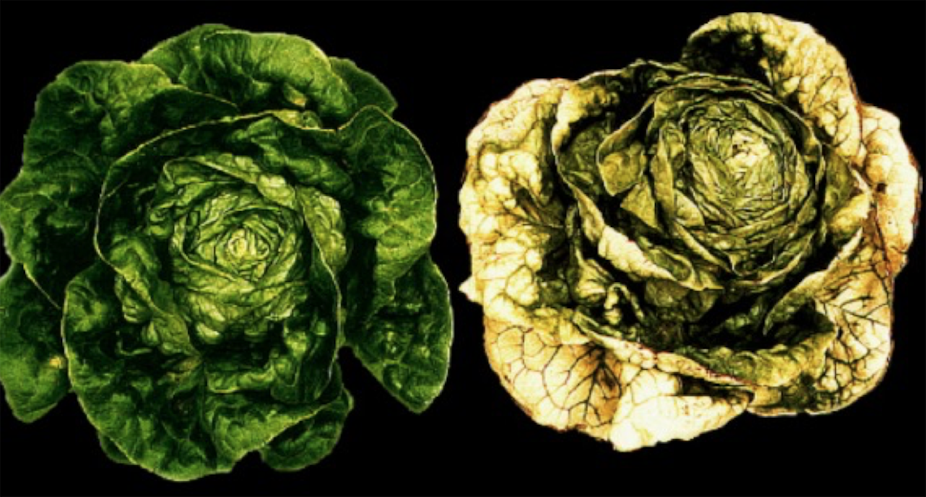THE SPIRIT
OF PLANTS - UNDER INFLUENCE
Today's
theme is somewhat irrelevant, but it seems interesting to me to classify it in
this series.
It happens
that plants do not have a normal behavior, nor even coherent, because they can
be put under influence, they can show unnatural behaviors, and it appears that
they can't avoid it, that they "act against their will".
An
article recently published in the digital periodical The Conversation in its
French version, and written by Véronique Brault, director of research in
virology at INRA (French National Institute for Agronomic Research), with the
participation of Simon Bourdin, master student in "Scientific
Communication" at the University of Strasbourg, explains how certain
viruses, in order to ensure their propagation, are able to interfere with the
behavior of their hosts, and in this case, the plants in which they are found.
"These viruses that manipulate plants
October 12, 2018
Mice that are no longer afraid of
cats, crustaceans that float on the surface of the water instead of sheltering
under the rocks, ants that disguise themselves as berries to be eaten by birds,
humans who emit odors attracting mosquitoes ... these unexpected behaviors,
sometimes suicidal, seem almost fanciful.
They are, however, present in
nature, and they all have one thing in common: they are the result of parasitic
infections. Indeed, many so-called "manipulative" parasites are able
to alter the behavior and even the physiognomy of their host to facilitate
their survival and propagation.
Plants do not escape the rule.
Viruses that parasitize them are often very ingenious to overcome their
immobility, using for this purpose mobile intermediate organisms called
vectors.
The virology unit of the INRA in
Colmar has recently highlighted a case of manipulation of the plant Camelina
sativa by Turnip Yellows Virus (TuYV). This virus has the particularity of
being transported from plant to plant only by an aerial vector, the aphid. The
virus spreads more effectively if aphids are attracted to infected plants
before they succumb to the infection.
Picture: https://www.nexles.com/articles/wp-content/uploads/2018/03/camelina-camelina-sativa.jpg
Make the
plant more palatable
Researchers have shown that TuYV
causes plants to emit odors that attract aphids. This same virus also changes
the chemical composition of the plant, making it more palatable - in a word,
more tasty - for the aphid. Having a more adapted food, the latter feeds more
and ingests more viruses, a net benefit for the pathogen that can accumulate in
the aphid and be more effectively propagated to other plants.
Examples abound of such
"manipulations" of plants by viruses, and studies reveal that these
alterations of the plant induced by the virus can vary according to the virus
in question and especially according to their mode of transport by the vectors.
For example, TuYV is a
"circulating" virus: for its efficient transmission, the aphid must
land on the infected plant and feed for a long time to ingest the virus that
travels through the sap. The pathogen is then carried with the sap in the
digestive tract of the insect and then through the cells of the intestine,
before joining the salivary glands, where it is reinjected to a new plant.
"Circulating" viruses
have a strong interest in inducing changes in the plant to attract aphids and
stimulate their diet.
Illustration showing the attraction
of aphids by infected Camelins and not infected Arabidopsis. Véronique
Brault/INRA
Optimize
transmission
There is another category of
so-called "non-circulating" plant viruses that don't pass through the
insect cells but are retained in the oral tract at the stylet or esophagus of
the vector.
In this group is, for example, the
Cucumber Mosaic Virus (CMV) also transmitted by aphid. This virus causes
infected plants to produce volatile substances that attract aphids but reduce
the nutritional quality of infected plants, causing aphids to emigrate quickly.
These two contrasting phenomena are
however perfectly adapted to the mode of transmission of CMV: the latter
requires only brief punctures in the surface cells of the plant to be retained
by the vector. The virus thus optimizes its transmission process by first
encouraging the aphids to land on the infected plants and then encouraging them
to leave these plants quickly after just tasting them.
More surprisingly, Rhopalosiphum
padi aphids with Barley Yellow Dwarf Virus (BYDV) prefer non-infected plants,
while non-infected aphids are attracted to infected plants (Ingwell et al.,
2012).
This example demonstrates that the
virus can, not only indirectly manipulate the plant to attract aphids, but also
act directly on aphids to alter their behavior.
On the track
of involved molecules
These observations raise many
unresolved questions.
Why do not these examples of
manipulation apply to all plants infected with the same virus? Why are there
also variations in behavior according to the species of aphid considered even
towards the same infected plant?
Current studies are therefore aimed
at identifying in infected plants the molecules that are responsible for vector
behavior changes, be they compounds that attract aphids or those that make them
more appetizing. This identification would make it possible to envisage new
control methods aimed at inhibiting the production of the molecules in question
by infected plants, so that they no longer have this attractive power for
aphids.
To date, the use of insecticides
remains the best method for farmers to reduce vector populations and limit the
losses associated with the viruses they carry.
A new control method based on the
non-attraction or even repulsion of aphids for infected plants would reduce the
spread of viruses in the field. To stop the dispersion of circulating viruses,
it would also be possible to select plant varieties naturally producing little
or no compounds responsible for the sustained ingestion of sap necessary for
the acquisition of these viruses.
Understanding the fine mechanisms
by which aphid-transmitted viruses manipulate their host plant to facilitate
their spread represents a promising science front for the development of new
control methods that are more respectful of human health and the environment.
"






Aucun commentaire:
Enregistrer un commentaire